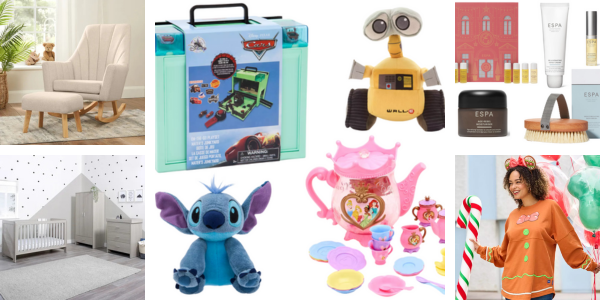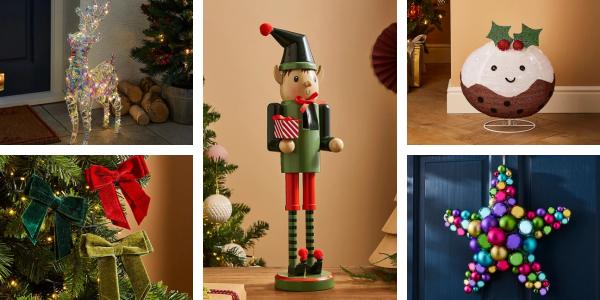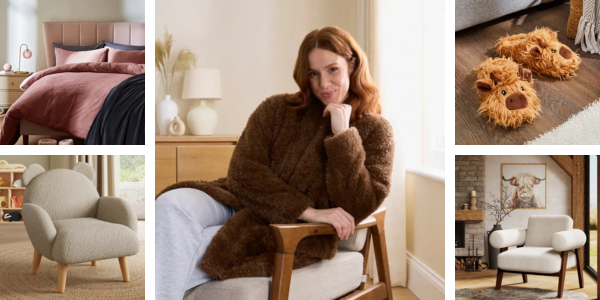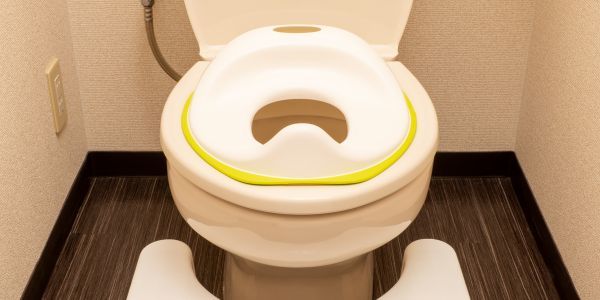.png)
.png)
Looking after a baby is hard work!
It’s all consuming. Couple that with no external help or stimuli and the days seem pretty long, right?
Add to that every mum’s paranoia that they’re not doing enough to help their baby’s development and you have a recipe for a stressful lockdown!
While we can definitely help with a ton of ideas to help keep your little one entertained while also helping with key areas of development, the main thing to remember is – YOU ARE ENOUGH! You’ve got this. Don’t beat yourself up if the prospect of entertaining your baby feels overwhelming some days, or you don’t have the energy. Just surrounding your little one with love is good enough!
But for days when you do have the energy and feel inspired to get busy with baby playtime, we’ve got you covered with lots of ideas for at-home lockdown entertainment! We’ve tried to keep these ideas that don’t need lots of kit – some of them just need you! When engaging with your baby, try and remove as many external distractions as you can. Turn the TV or radio off (unless music is part of your activity) and move other toys away.
You’re the Star!
Hopefully you know by now that it’s your face that your baby loves looking at the best, so here are a few really simple games that you can play with even the youngest of little ones where you’re the star of the show!
- Silly faces – with your baby facing you, try making silly faces such as sticking your tongue out or puffing out your cheeks. Give your baby time to copy you or try to copy you with each expression. Repetition is key here, but will really help with personal, social and emotional development.
- Simple sounds – when your baby is making noises (goos and gurgles – the beginnings of their own little language) try repeating them back to them to allow communication to bounce between the two of you and encouraging them to find their voice. It will support their communication skills and help with their self-confidence.
- Word identification & everyday narration – your baby loves hearing you speak so just go through simple naming games with them such as naming parts of their body as you touch them – “this is your nose” or “I’ve got your nose” for example. You can make this a multi-sensory activity by using a feather, pastry brush or just your fingers to trace lines over your little one’s body, explaining the body parts you’re touching as you go.

As your little one starts to be able to reach for you then do the same thing in reverse – “That’s my nose! Have you got my nose?” and then move on to asking your baby “Where is mummy’s nose?”. Help by moving baby’s hand to your nose and repeat with his/hers or Daddy’s and so on – trying different body parts until when you ask, your baby reaches out themselves. Offer big claps, smiles and cheers to show them they have done well.
This activity can be extended to the narration of everyday tasks around the house such as making a meal – pointing out what you’re holding or using so that they start to associate words with objects before actually verbalising them.
Sensory Play
Activities that engage different senses can be very simple and stimulating. Try these ideas to work on all your baby’s senses:
- Sound play – make musical shaker instruments using lentils, pasta etc in an old plastic bottle or tupperware container. Experiment with what you put in and the different sounds you can create. Or get your saucepans out of the cupboard and offer a wooden spoon to act as their very first drum kit.
- Sensory bottles – similar to the musical instrument idea above, you can make some great sensory toys for little ones to play with at home by filling old plastic bottles with a screw top lid with a range of colourful, sparkly or other items. Oil, water and food colouring can make some really cool shapes and patterns when swished around too – why not add some glitter if you have some lurking in a drawer?
- Splish splash – fill a washing up bowl or large-ish tub with water and explore dropping different items in. See which ones sink or float. Make some bubbles with washing up liquid or bath foam. Water play doesn’t have to be reserved for bath time.
- Peekaboo – use a muslin or scarf to play a game of peekaboo with your baby, hiding your face and then popping out to surprise them. This can help with separation anxiety (the fear that if they can’t see something it’s not there), as well as being a fun pastime. You can extend this to hiding their favourite toy under the material and seeing if they can work out where it is / how to get to it.
- Get messy – yes we know this can be a big ask but if you can relax into it, messy play is a lot of fun! We could talk for a very long time about all the messy play ideas we would suggest but the simplest and safest messy play idea comes in the form of edible paint – made using plain yoghurt and blitzed blueberries or another similarly bright coloured fruit. Give them a bowl and let them go to town on some paper, a sheet of plastic on the floor, or just on the table if it’s easy to wipe down. Sitting them in a small paddling pool (with no water in) or a builder’s tuff tray can also be a great way to contain the chaos (slightly). Obviously this is best for babies aged 6m+ who can sit up and have started weaning, but there are plenty of other things you can do with smaller babies… For example:
- Baby art – keepsake cards are a lovely activity to try at home, painting your little one’s hands or feet and making prints out of them. The feeling of the paint on their extremities will be totally new for them. And at this time of enforced separation for families, what nicer thing to send to a grandparent or friend who you can’t see? Google is your friend here – providing lots of inspiration for ‘baby art’. Just make sure you have a flannel or some wipes to hand to do a quick clean up when your baby starts wriggling!
- Emergency (blankets)! Commonly found in first aid kits, emergency blankets (the foil things people are given after running a marathon) are fab sensory play items to have – and super versatile. They are great for encouraging tummy time, or using them to float above your baby as they lie on the floor. Little ones love the shiny texture, but the rustling sounds they make are also quite exciting to little ears. Older babies will enjoy scrunching it up and crawling over it. You can also make dens with it or when it is getting a bit worn, cut it up to use for crafts or to put in a sensory bottle with some water!
- Never too young to disco – If you happen to have any coloured lights at home (get the Christmas lights out of the attic), or anything that projects onto the ceiling (you can get some Apps that will do this), the light show that you can create is great for developing your baby’s eye tracking skills.
- Bubbles – these are also great for helping your baby’s eyes to track moving objects, and can encourage gross motor skill development skills too as they reach out and try to catch the floating spheres of loveliness!
- Baby musical statues – crank up your favourite tunes and have a dance with your little one. Encourage them to move their hands, feet, bodies – whatever they’re capable of. And then pause the music and see what happens! It’s amazing to see them freeze as you do – really listening to what’s changed. It’s a great exercise in listening and learning the difference between loud and quiet.

Back to Basics – The Humble Box
We can order an endless supply of toys but when it comes down to it – we know babies and toddlers love a cardboard box – probably the one the toy you just bought came in! There’s hundreds of things a cardboard box can be – a house, a car, a rocket, a tent! Collect a few of differing sizes and they can be a stacking tower ready to be demolished, or a big puzzle to fit together as one slots into another. Enjoy imaginative play and use a box! Link it to a favourite story book and really bring the tale to life.
What’s in the Box?
Or, if your imagination fails you (as it has done me on countless occasions – particularly when sleep deprived), fill the box with everyday (baby safe) objects. Think spoons, clothes pegs, paint brushes or bits of material, etc), and simply allow them to empty it out and put the items back in again to their heart’s content.
Change the contents each time you do it – you could theme it around colours or textures and explain what they’re pulling out as they go to start to allow them to associate words with objects. This will keep them busy, while still enabling sensory exploration, and working on their motor skills. Call it a treasure box and make it even more exciting. This is known as heuristic play – open-ended play to aid learning and discovery.
Family time
If you have an older sibling at home, it might be worth roping them in on the fun. Babies are eager to learn, and older siblings are full of knowledge they’re eager to share. As a brother or sister “teaches,” they cement their knowledge, and gain in confidence too. Activities like kitchen dance-offs, show and tell, funny faces and story time are all great for this.
Screen time
Screen time can be a bit of a dirty word, but sessions that have been developed specifically for little ones can be a great source of entertainment, and can help teach numeracy and verbal skills. Nothing can match the buzz and excitement of face-to-face classes, however, whilst we are all stuck at home, they can be a really useful resource. Many will need your participation with your baby, especially while they’re still really little and unable to sit observing something alone, but even if you don’t get a complete break at least these online offerings can take the pressure off you having to constantly think of activities or remember the words to nursery rhymes!
All these activities are really great for your baby’s brain development and will help develop their senses! Do remember though that they may get overwhelmed or over-stimulated if you do too much – so don’t take it personally if they get upset after a few minutes of your best efforts. They will need breaks away from these sorts of activities to rest depending on their age. Also, don’t be disheartened if they don’t like something at first – it may just be a bad time for them or they may enjoy it later or another time.
Written by Jen Hibberd, with input from Elise Betts, Hazel Janes & Louise Zimmerman from www.busylizzy.co.uk
You may also wish to see:


.png)






.jpg)
